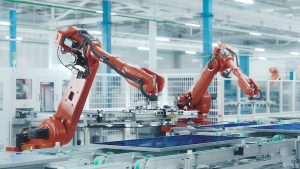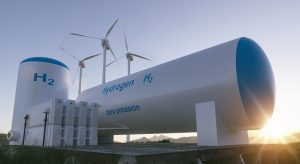I remember the conversation I had with a friend a few years ago who just become the plant manager of the largest petrochemical complex in the world, I asked him what keeps him up at night, he said without hesitation. “Safety!”. This certainly resonates with every plant manager around the world. However, several major interruptions in 2020 should prompt us to rethink and reinvent safety strategies.
Safety is a top priority in the oil & gas industry. Like any businesses, oil & gas business performance is measured by profitability with KPIs like ROCE (Return on Capital Employed), but equally important is Safety, typically measured by KPIs like injury, lost time, production loss. For oil & gas operations, safety is a constant threat due to the hazardous nature of hydrocarbons that includes fire, explosion, toxicity, corrosiveness, and asphyxiation. Industrial incidents can cause human lives and huge financial losses. They often generate major environmental pollution that make the media headlines. Essentially safety is the license to operate.
Safety is Sustainability. Environmental, health and safety are usually bundled together as a corporate KPI. Safety and environmental compliance regulations are increasingly stringent for the most part of the world, especially pressure from sustainability. With the Covid-19 pandemic, safety also meant workers health and wellness. Remote working and operation became a norm and a solution. Digitalization offers tremendous opportunity for oil & gas companies to improve safety and sustainability throughout the entire lifecycle of the plant.
Cybersecurity is Digital Safety. According to a Morgan Stanley survey, Cybersecurity is by far the number one concern for adoption of IIoT/Digital transformation; cybersecurity must be addressed before implementing digital transformation. Another IT survey also stated 70% of the employees do not understand cybersecurity and average cost of breach is $3.8 M. Aside from financial and intellectual property loss, cybersecurity intrusion can easily compromise plant safety in terms of malicious intent to cause hazardous process conditions and destabilizes the automation system. Considering the average days pass between breach discovery and reporting date is 49.6 days, this is literally the worst nightmare for plant operations.
Safety relies on People, Process, and Technology. Many CEOs will tell you the most important company asset is people. Safety culture is top down and starts with people. People are needed to execute work but people make mistakes. Process is a series of procedure/workflow to achieve a goal, and strong processes ensure consistency. The limit of process is consistency does not necessarily generate efficiency and quality. Technology helps innovation and technology automate the process. However, too much technology discouraged users from adopting them. Ultimately, technology is there to support people and process and make them easier.
Most Oil & Gas operations depend on “Swiss cheese model” layer approach to mitigate and prevent risk. Industrial incidents occurred usually due to holes in the Swiss cheese model when each layer fails to prevent and deter the accident from getting closer to happening. Example of Process Safety layers can be process control systems, safety systems, standard operating procedure, training, reliability inspection audits, maintenance rounds and checks, management controls etc.
Safety is a lifecycle strategy. The proven way to improve safety is through prevention and mitigation across the lifecycle of the plant – Design, Built, Operate, Inspect, Maintain. We will review the five lifecycle strategies from the viewpoint of Process Safety, Cybersecurity and Electrical Safety.
In this blog, we will focus on three aspects of safety within the oil & gas, petrochemical industry: Process Safety, Cybersecurity. Electrical Safety
Five Process Safety & Cybersecurity lifecycle strategies:
- Well Designed – Process design incorporating safety protocols from HAZOP, PHA, LOPA, SIL/SIF studies. Develop digital twin of the plant and its assets will impact the plant’s safety throughout its lifecycle. For example, dynamic simulation and operator training based on digital twin that train operators to handle abnormal hazard situations. Incorporating cybersecurity IEC 62443 design practice into IT and OT.
- Well Built – Integrated control and safety system automates the process and provides the most effective prevention against abnormal situations. It is important to incorporate cybersecurity IEC 62443 design into IT/OT interconnection, device hardening, remote access points, and firewall.
- Safely Operated – As operation changes dynamically, process, people and technology need to evolve also. Alarm management solution prioritizes alarm and resolve alarm flooding issues. Safety data analytics systems monitors and review safety workflows, make recommendations to repair or modification. Operator Training Systems and Augmented Reality software solutions ensure operator skills are updated. Remote operations to improve worker safety is enabled by digitalization technologies like cloud and advanced analytics. Cybersecurity detection, awareness and training will ensure safe operations.
- Properly Inspected – Procedural automation and mobile operator rounds ensure assets are performing reliably and safety procedures are followed. Cybersecurity is on top of the mind of most CIO, cybersecurity audit can be a good starting point.
- Well Maintained – Control Systems modernization is considered when the system aging and reliability becomes an issue. Asset Performance management solutions ensures the asset reliability of instrument devices, valves, compressors, pumps etc. Cybersecurity response recovery procedures, and software patch management are essential part of the maintenance. Adequate personal safety measures like PPE, access security, fall protection etc. protects workers from injuries and sickness.
Similar to Process Safety, Electrical Safety also depends on layer approach to mitigate and prevent risk. The most effective electrical safety strategy is prevention. The goal is to protect people & prevent fire.
Five Electrical Safety lifecycle strategies:
- Well Designed-Review Electrical System Design with Power System experts during design phase
- Well Built-Incorporating standard built-in design power system like MV switchboards, LV circuit breakers and motor control centers against electrical hazards. Consider additional innovative solutions like Arc Flash detection, wireless self-powered thermal monitoring, enclosure-based arc resistance, on-board racking, remote racking, remote control etc.
- Safely Operated– Electrical safety training, secure operation with haptic virtual reality solutions
- Properly Inspected– Audit Electrical System with Modernization, Performance, Safety (MPS) Enterprise Study, Arc Flash Study
- Well Maintained – Safely maintain, connect, monitor electrical assets with remote analytics and expert diagnostics. Adequate personal safety measures like PPE, access security, fall protection etc.
Safety will always remain the top priority for oil & gas companies, but safety should also evolve with emerging trends like sustainability, cybersecurity, and the pandemic. Oil & gas companies will have the opportunity to reinvent safety strategies with the help of digital technologies.
Learn more about Process Control and Saftey systems here…





